Fatigue Damage Mitigation for Welded Beam-to-Column Connections in Steel High-Rise Buildings Using Passive Vibration Control
Abstract
1. Introduction
2. Fatigue Damage Mitigation for a Single Connection
2.1. Mitigation Using the VFD System
2.1.1. Formulation of the Model
2.1.2. Results and Analysis
2.1.3. Parametric Study
2.2. Mitigation Using the TMD System
2.2.1. Formulation of the Model
2.2.2. Parametric Study
2.3. Low-Cycle Fatigue
| Condition No. | Parameters | Without the VFD | With the VFD | ||||||
|---|---|---|---|---|---|---|---|---|---|
| α | C (kN·s/m) | Δε (1 × 10−3) | uz (mm) | N0 | Δε (1 × 10−3) | uz (mm) | Ne | k | |
| 1 | 0.25 | 450 | 2.034 | −6.35 | 58,256 | 1.840 | −6.32 | 92,129 | 1.6 |
| 2 | 0.25 | 600 | 1.833 | −6.32 | 93,801 | 1.6 | |||
| 3 | 0.25 | 750 | 1.828 | −6.32 | 95,020 | 1.6 | |||
| 4 | 0.25 | 900 | 1.824 | −6.32 | 96,011 | 1.6 | |||
| 5 | 0.25 | 1050 | 1.819 | −6.32 | 97,269 | 1.7 | |||
| 6 | 0.35 | 750 | 1.844 | −6.32 | 91,192 | 1.6 | |||
| 7 | 0.45 | 750 | 1.852 | −6.32 | 89,355 | 1.5 | |||
| 8 | 0.55 | 750 | 1.854 | −6.32 | 88,904 | 1.5 | |||
| 9 | 0.65 | 750 | 1.855 | −6.32 | 88,679 | 1.5 | |||
3. Fatigue Damage Mitigation for Multi Connections in the Structure
3.1. Finite Element Model

3.2. Fatigue Analysis
3.3. Structure with VFD Systems
3.4. Structure with TMD Systems
4. Discussion
4.1. Optimization of Damper Positions
4.2. Negative Mitigation Effect
5. Conclusions
- (1)
- The VFD and the TMD systems are both effective in local fatigue damage mitigation, along with structural displacement mitigation, for both a single connection under constant amplitude cyclic loading and multi-connections in a high-rise building under stochastic wind, while the mitigation effect decreases in the low-cycle fatigue condition compared with the high-cycle fatigue condition; therefore, these two passive control systems both have promising usability in fatigue damage mitigation of welded beam-to-column connections in steel high-rise buildings.
- (2)
- The VFD generally has a better mitigation effect than the TMD and it starts to take effect instantly with external loading and is equally effective in connections and structures with almost all ranges of natural frequencies, but it causes a phase difference in the structural responses, including stress and displacement. On the contrary, the TMD starts to take effect after a few cycles and is more effective in connections and structures with a lower natural frequency, and it does not change the phase of the structural responses. Regarding the economic effect, the VFD is more economical and easier to install for the mitigation of one or several connections, while the TMD is more economical and easier to install for the mitigation of all the connections in a high-rise building.
- (3)
- The VFD system should be designed with a small damping exponent and a large damping coefficient in the braced installation form, while the TMD system can be designed according to the optimal parameters, so that the two systems are more optimal to both the local stress and the structural displacement, since the two indexes are found to show similar and synchronous mitigation trends and thus the VFD and the TMD can be designed based on either the local stress or the structural displacement.
- (4)
- For the sake of a better fatigue damage mitigation effect in a targeted beam-to-column connection, the optimized VFD layout plan is that VFDs are placed between the two connections with large relative displacement and relative velocity on higher floors to increase their working efficiency; moreover, these two connections with VFDs should be near to the targeted connection.
- (5)
- The negative fatigue damage mitigation mainly stems from an insufficient lateral support force so that the direct installation of VFDs may result in a negative fatigue damage mitigation effect in the connections with limited lateral support.
Author Contributions
Funding
Institutional Review Board Statement
Informed Consent Statement
Data Availability Statement
Conflicts of Interest
References
- Plumier, A.; Agatino, M.R.; Castellani, A.; Castiglioni, C.A.; Chesi, C. Resistance of steel connections to low-cycle fatigue. In Proceedings of the 11th European Conference on Earthquake Engineering, Paris, France, 6–11 September 1998. [Google Scholar]
- Soong, T.T.; Dargush, G.F. Passive Energy Dissipation Systems in Structural Engineering; John Wiley & Sons: New York, NY, USA, 1998. [Google Scholar]
- Janbazi, R.H.; Tabeshpour, M.R. Spectral fatigue analysis of jacket platform under wave load equipped with viscous damper. J. Mar. Sci. Technol. 2019, 24, 855–870. [Google Scholar] [CrossRef]
- Allen, C.K.; Goupee, A.J.; Viselli, A.M. A computationally-efficient frequency domain model of a floating wind turbine with hull-based tuned mass damper elements. In Proceedings of the 31st International Ocean and Polar Engineering Conference, Rhodes, Greece, 20–25 June 2021. [Google Scholar]
- Repetto, M.P.; Solari, G. Wind-induced fatigue collapse of real slender structures. Eng. Struct. 2010, 32, 3888–3898. [Google Scholar] [CrossRef]
- Repetto, M.P.; Solari, G. Dynamic alongwind fatigue of slender vertical structures. Eng. Struct. 2001, 23, 1622–1633. [Google Scholar] [CrossRef]
- Bhowmik, B.; Tripura, T.; Hazra, B.; Pakrashi, V. Real time structural mod25al identification using recursive canonical correlation analysis and application towards online structural damage detection. J. Sound Vib. 2020, 468, 115101. [Google Scholar] [CrossRef]
- Bhowmik, B.; Tripura, T.; Hazra, B.; Pakrashi, V. First-order eigen-perturbation techniques for real-time damage detection of vibrating systems: Theory and applications. Appl. Mech. Rev. 2019, 71, 060801. [Google Scholar] [CrossRef]
- Prawin, J. Real-time reference-free breathing crack identification using ambient vibration data. Struct. Control. Health Monit. 2022, 29, e2903. [Google Scholar] [CrossRef]
- Palmeri, A.; Ricciardelli, F. Fatigue analyses of buildings with viscoelastic dampers. J. Wind Eng. Ind. Aerodynamics. 2006, 94, 377–395. [Google Scholar] [CrossRef]
- Golafshani, A.A.; Gholizad, A. Passive vibration control for fatigue damage mitigation in steel jacket platforms. Int. J. Eng. 2008, 21, 313–324. [Google Scholar]
- Ambrosio, P.; Cazzulani, G.; Resta, F.; Ripamonti, F. An optimal vibration control logic for minimising fatigue damage in flexible structures. J. Sound Vib. 2014, 333, 1269–1280. [Google Scholar] [CrossRef]
- Ripamonti, F.; Cazzulani, G.; Cinquemani, S.; Resta, F.; Torti, A. Adaptive active vibration control to improve the fatigue life of a carbon-epoxy smart structure. In Active and Passive Smart Structures and Integrated Systems, Proceedings of the SPIE Smart Structures and Materials + Nondestructive Evaluation and Health Monitoring, San Diego, CA, USA, 8–12 March 2015; SPIE: Bellingham, WA, USA, 2015; pp. 732–740. [Google Scholar]
- Andersson, A.; O’Connor, A.; Karoumi, R. Passive and adaptive damping systems for vibration mitigation and increased fatigue service life of a tied arch railway bridge. Comput.-Aided Civ. Infrastruct. Eng. 2015, 30, 748–757. [Google Scholar] [CrossRef]
- Radaj, D.; Sonsino, C.M.; Flade, D. Prediction of service fatigue strength of a welded tubular joint on the basis of the notch strain approach. Int. J. Fatigue 1998, 20, 471–480. [Google Scholar] [CrossRef]
- Hobbacher, A. Recommendations for Fatigue Design of Welded Joints and Components; Springer: Dordrecht, The Netherlands, 2015. [Google Scholar]
- Fang, Z.; Li, A.; Li, W.; Shen, S. Wind-induced fatigue analysis of high-rise steel structures using equivalent structural stress method. Appl. Sci. 2017, 7, 71. [Google Scholar] [CrossRef]
- Fang, Z.; Li, A.; Ding, Y.; Li, W. Wind-induced fatigue assessment of welded connections in steel tall buildings using the theory of critical distances. Eur. J. Environ. Civ. Eng. 2020, 24, 1180–1205. [Google Scholar] [CrossRef]
- Fang, Z.; Li, A.; Ding, Y.; Shen, S. Three-dimensional surface fatigue crack growth life assessment model of steel welded joints and structures. Adv. Struct. Eng. 2022, 25, 1776–1791. [Google Scholar] [CrossRef]
- Den Hartog, J.P. Mechanical Vibrations; McGraw-Hill Book Company: New York, NY, USA, 1956. [Google Scholar]
- Den Hartog, J.P. Mechanical Vibrations; Dover Publications: New York, NY, USA, 1985. [Google Scholar]
- Kelly, S.G.; Kudari, S. Mechanical Vibrations; Tata McGraw-Hill Publishing Co., Ltd.: New Delhi, India, 2009. [Google Scholar]
- Socie, D.F. Fatigue-life prediction using local stress-strain concepts. Exp. Mech. 1977, 17, 50–56. [Google Scholar] [CrossRef]
- Ubertini, F.; Giuliano, F. Computer simulation of stochastic wind velocity fields for structural response analysis: Comparisons and applications. Adv. Civ. Eng. 2010, 83, 441–456. [Google Scholar] [CrossRef]

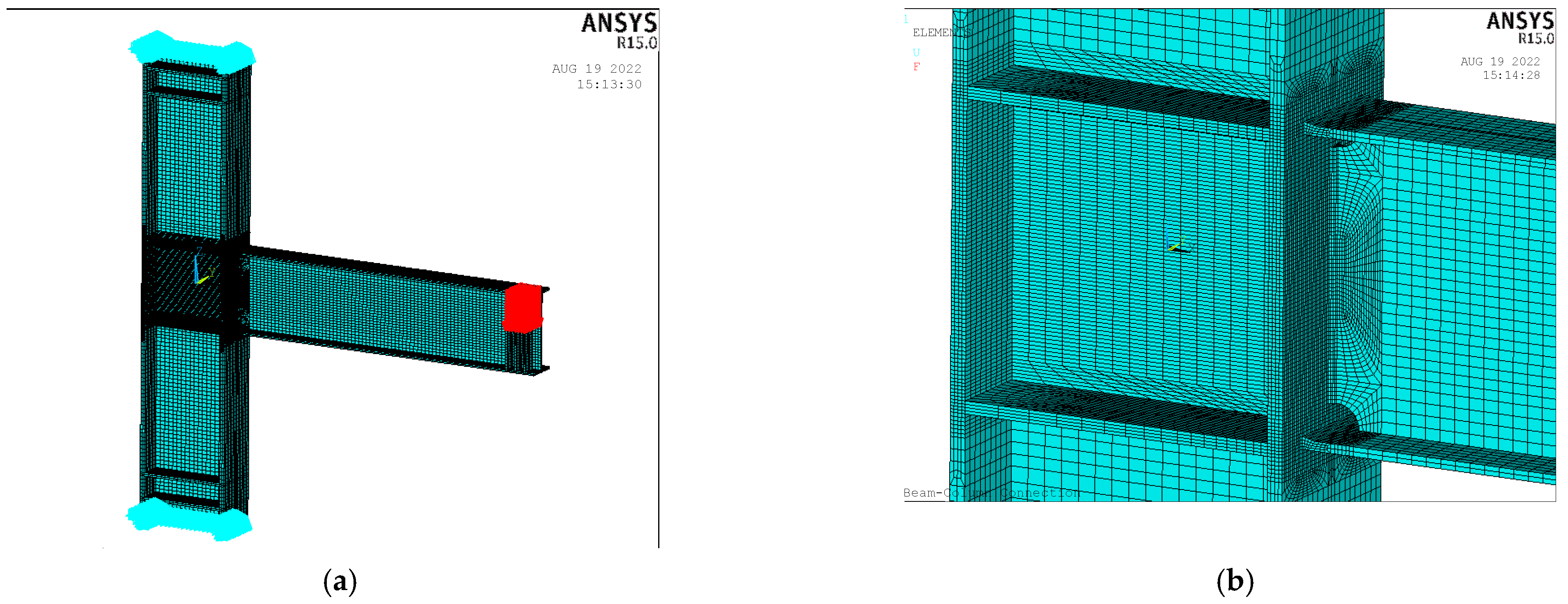

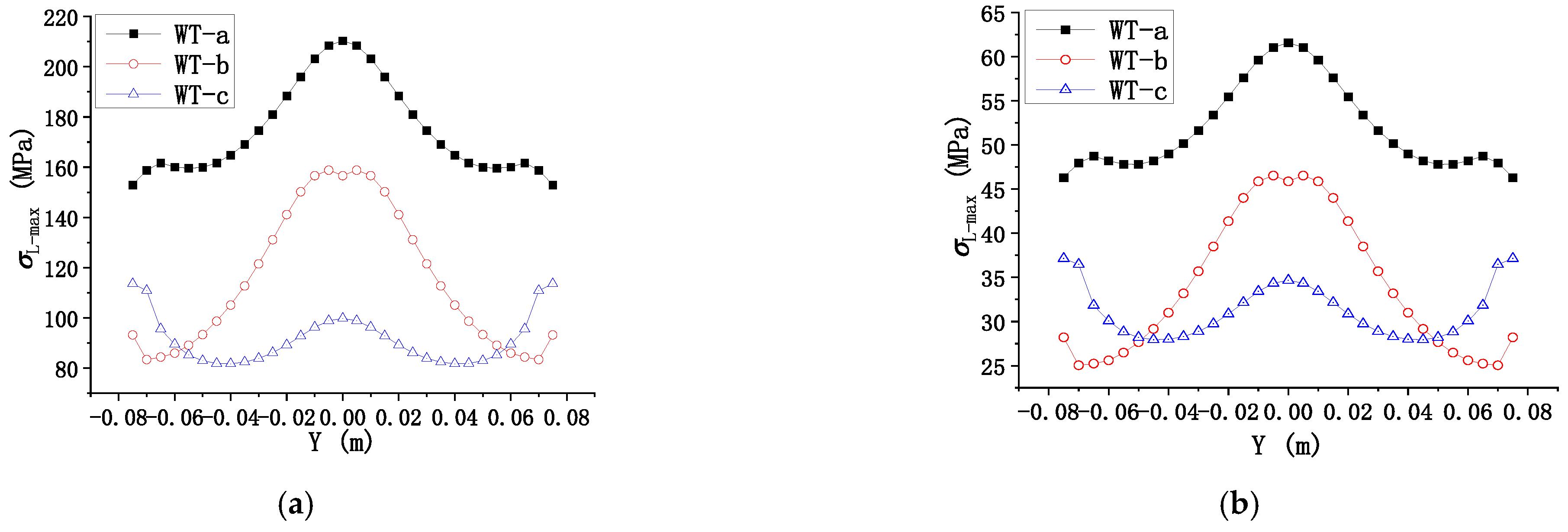
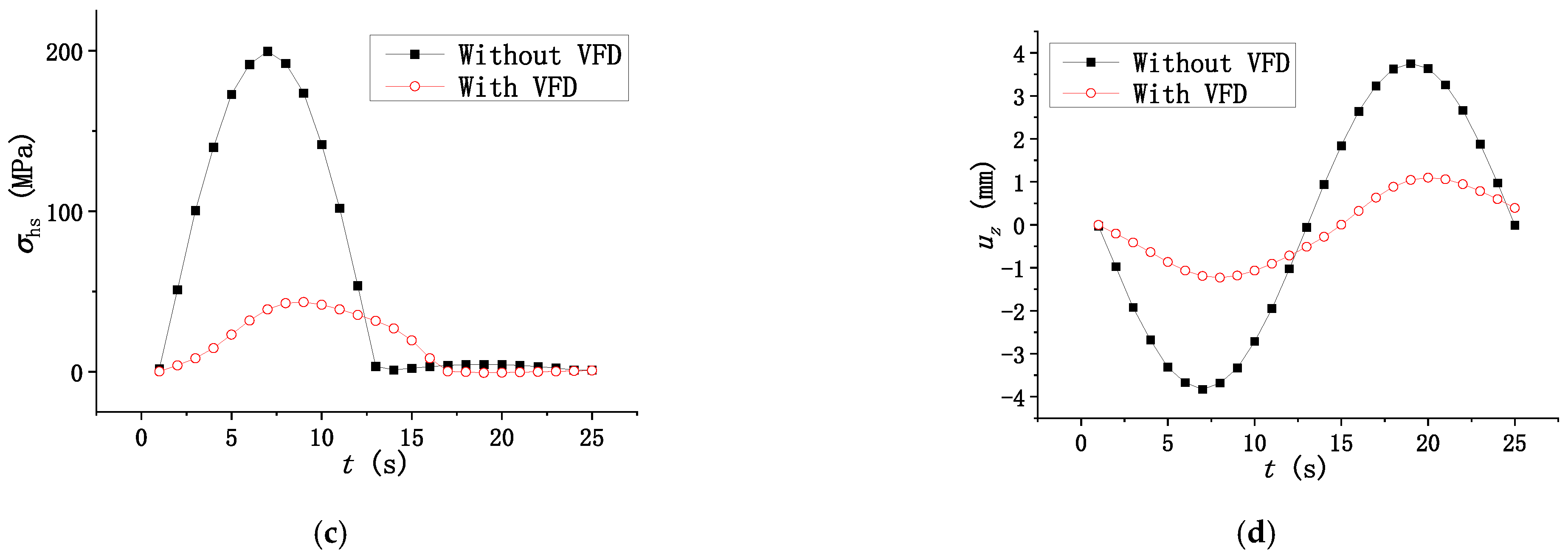
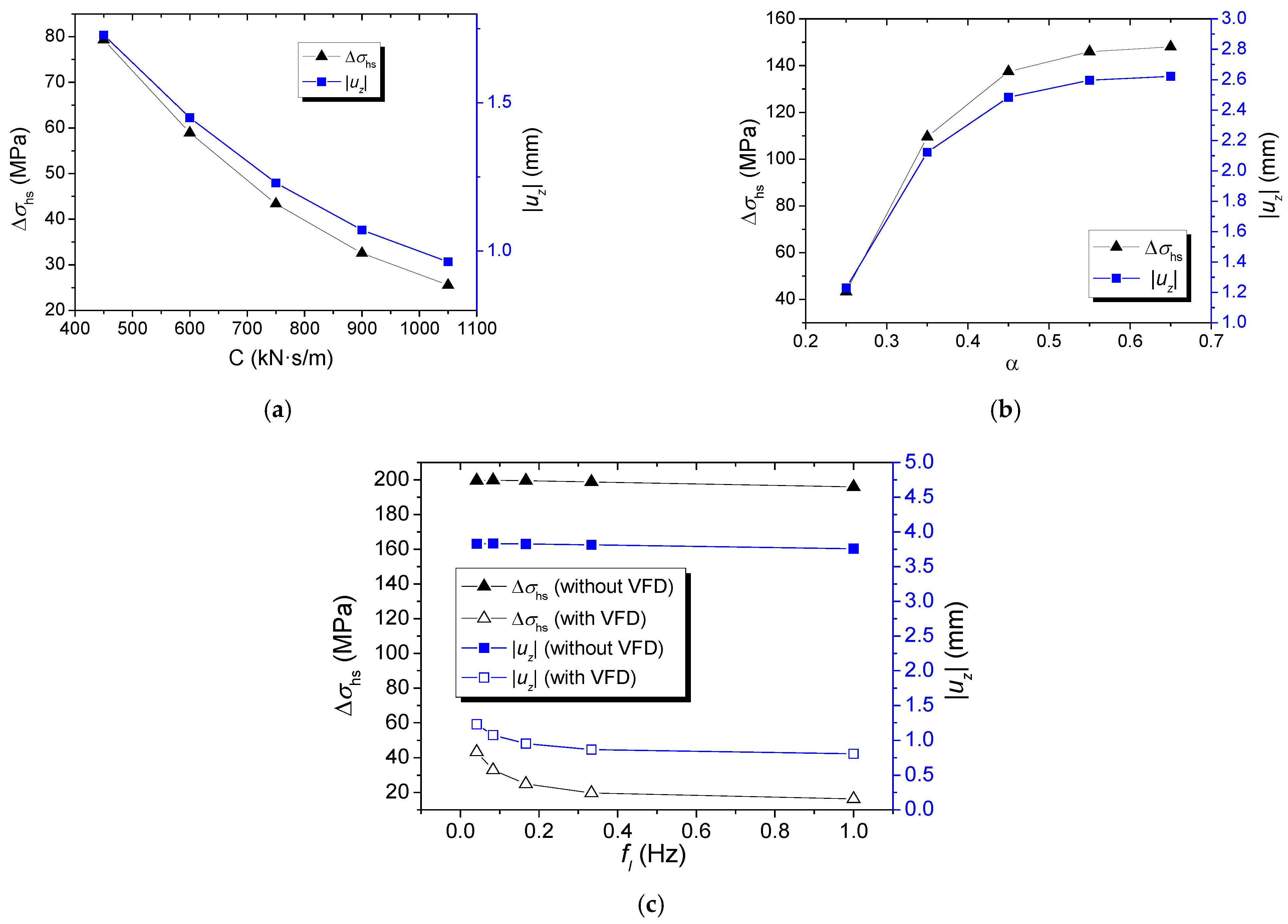

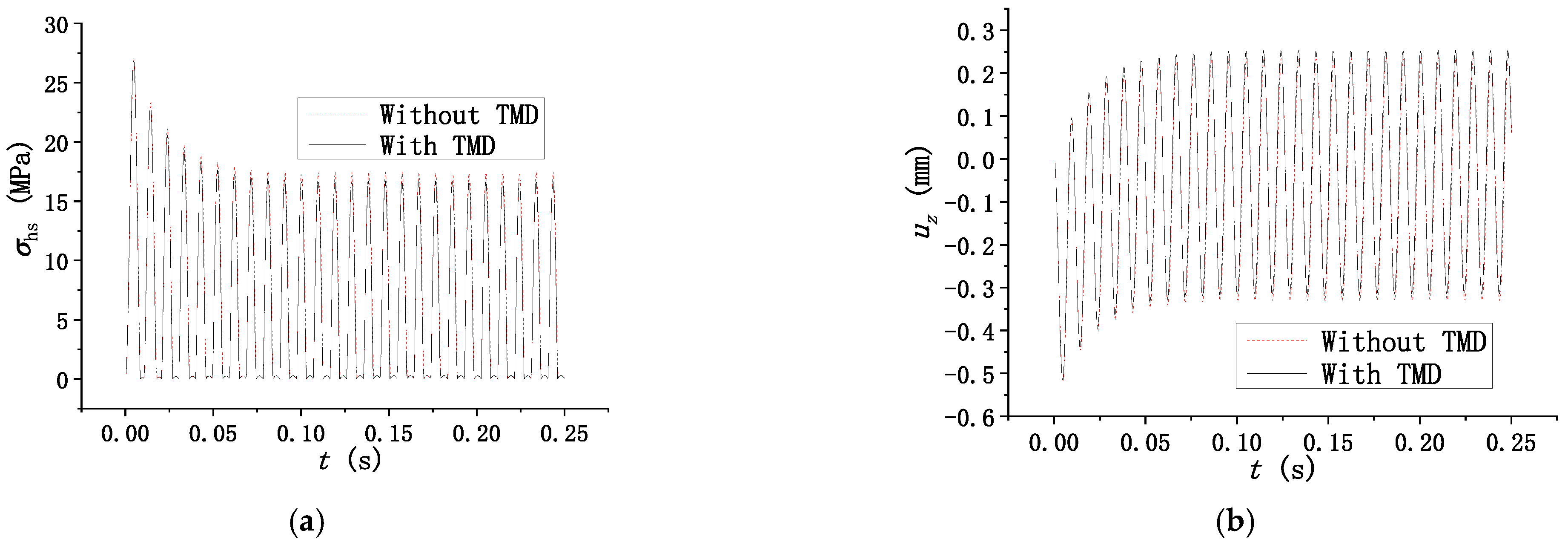
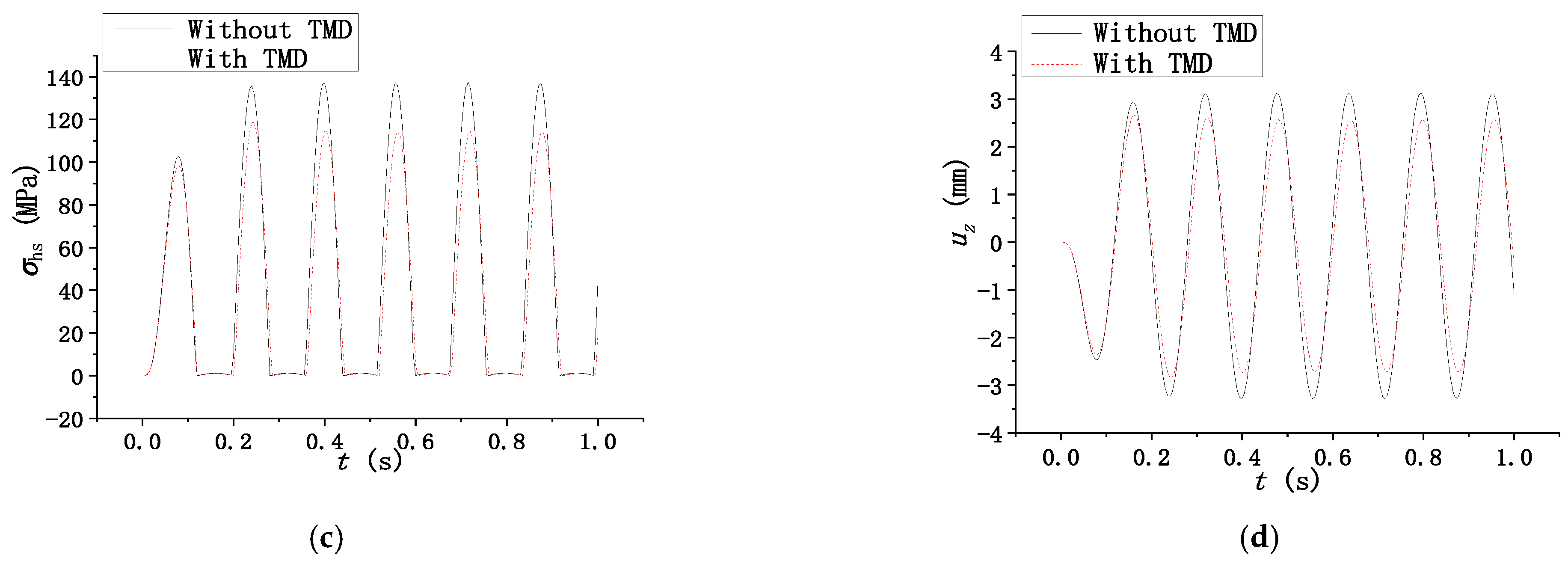
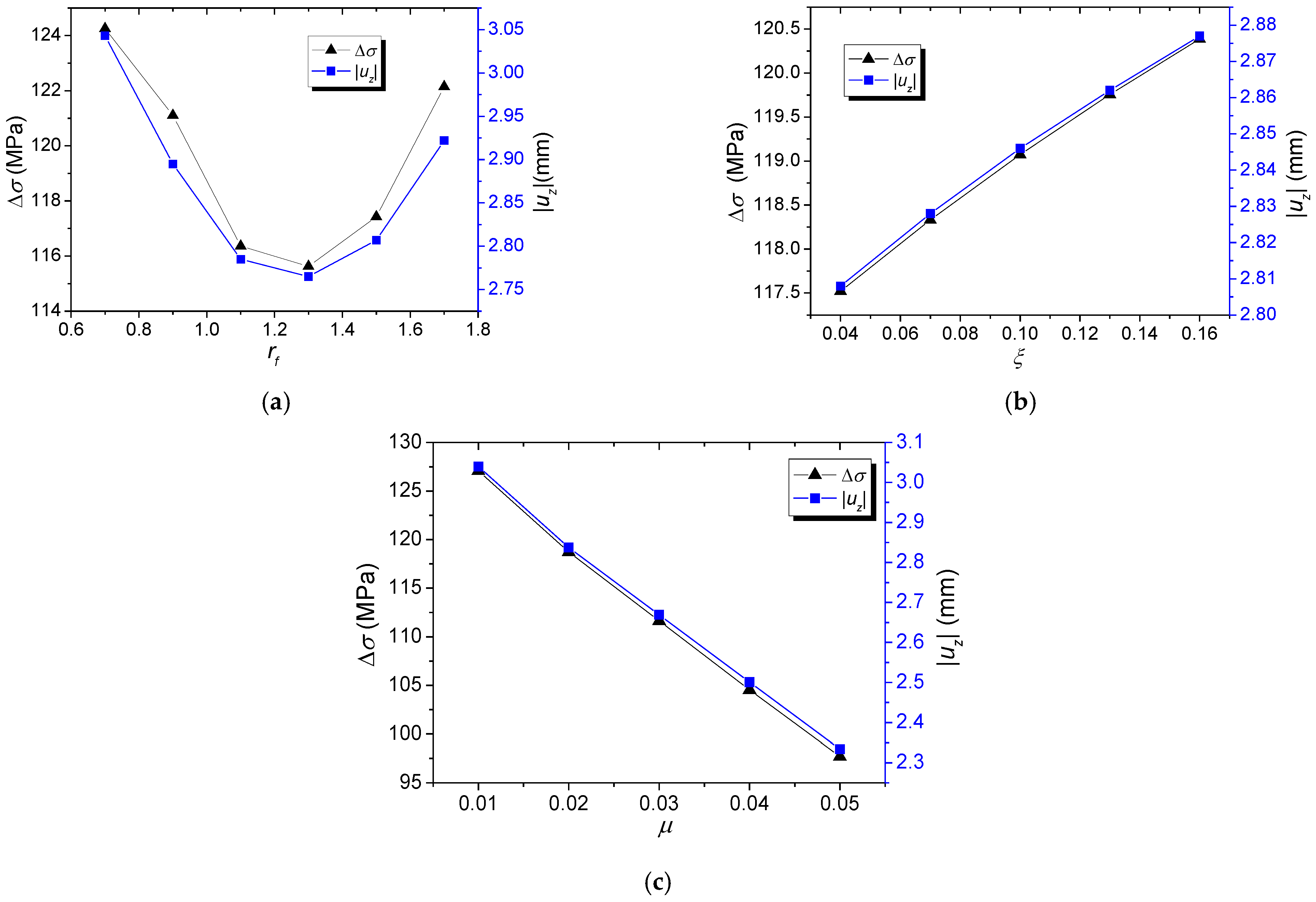

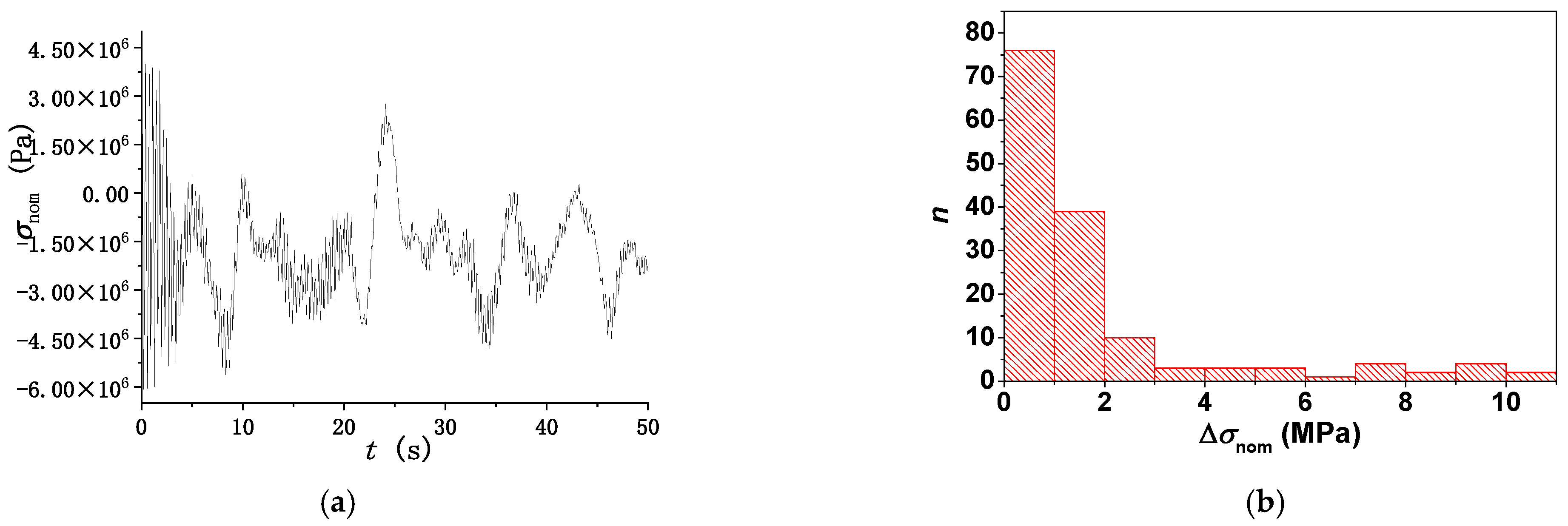
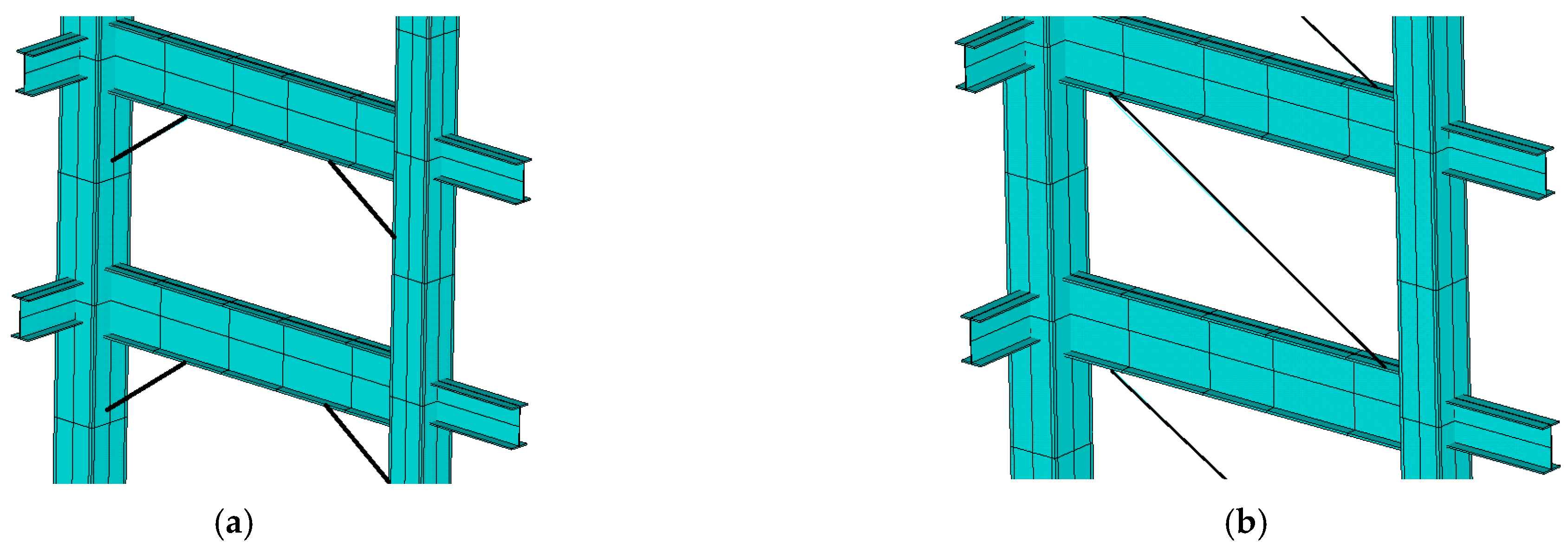

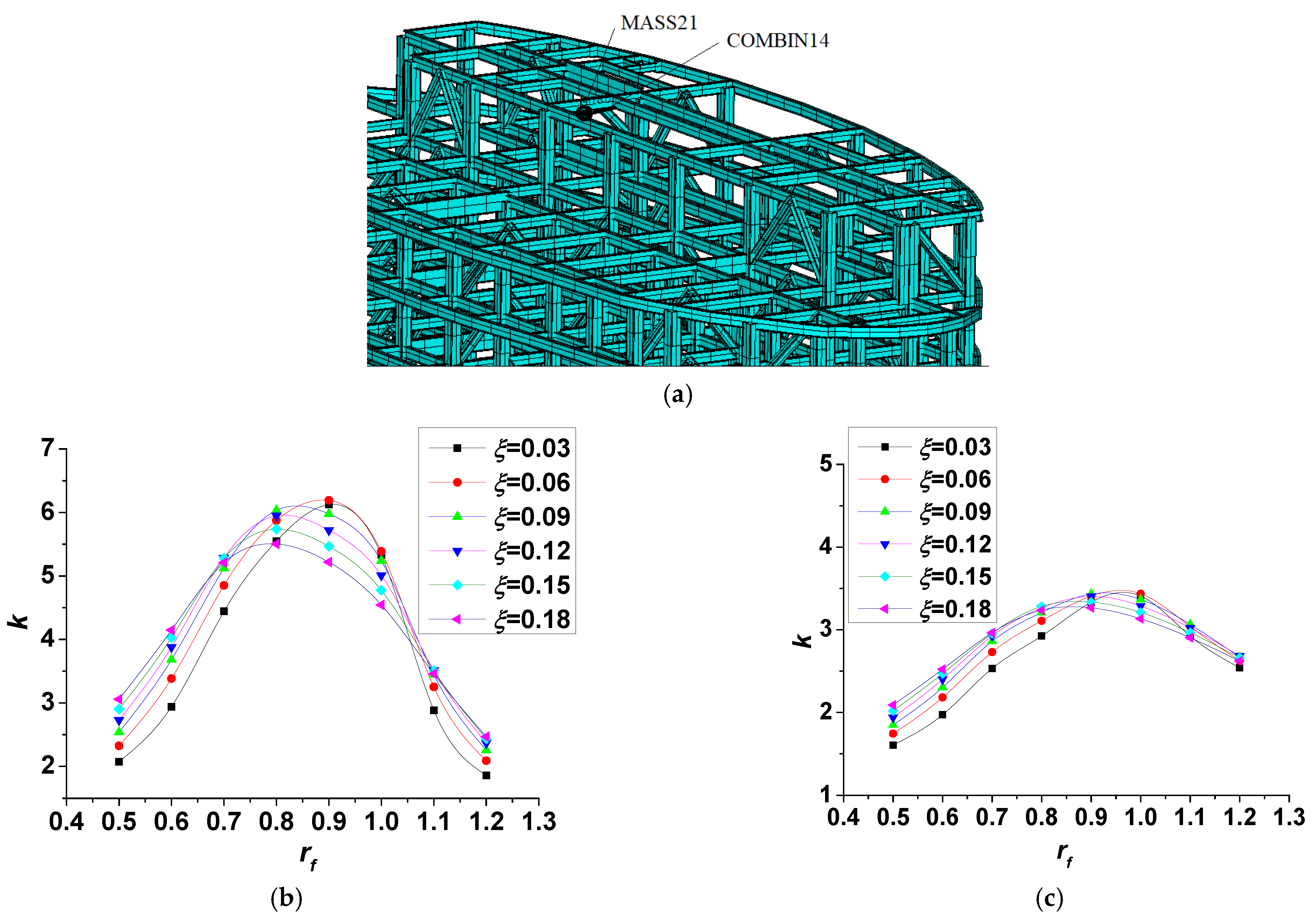
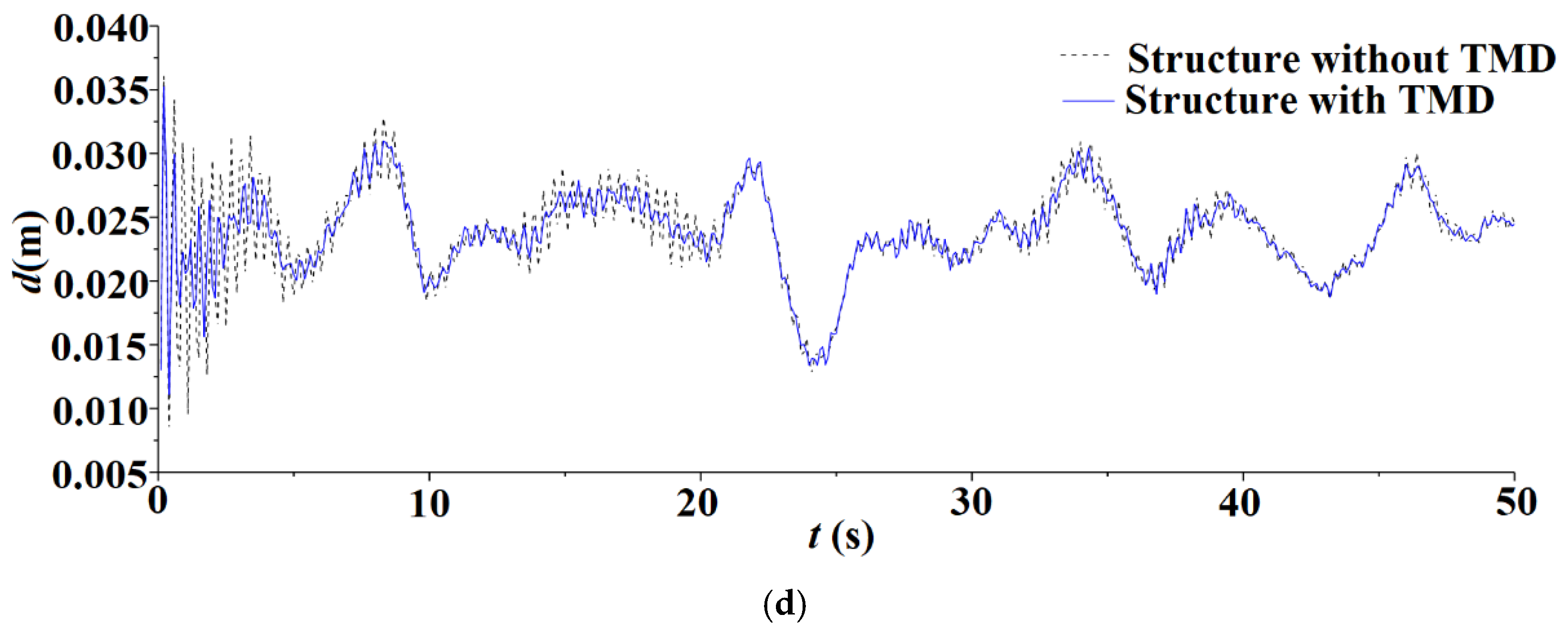
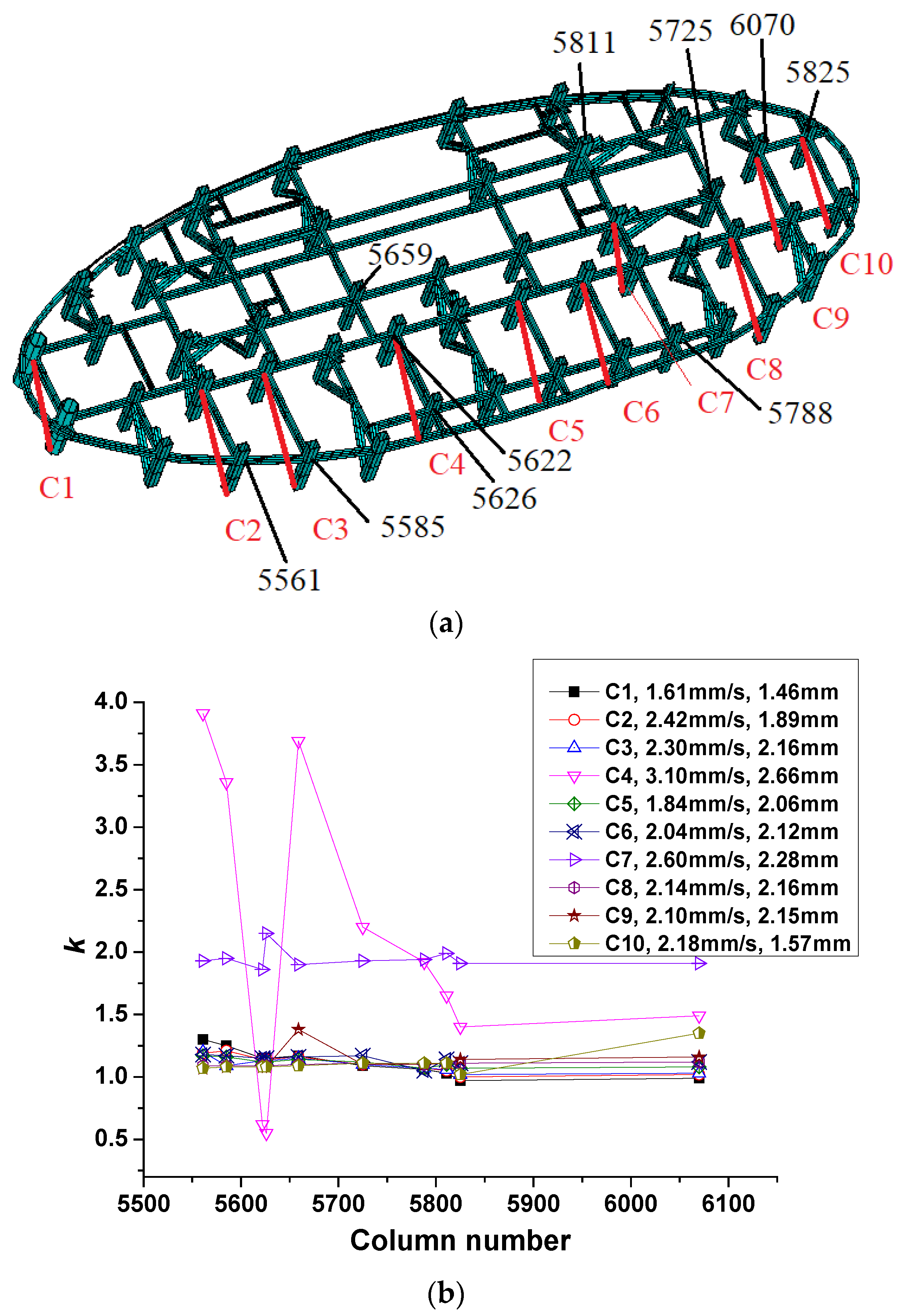
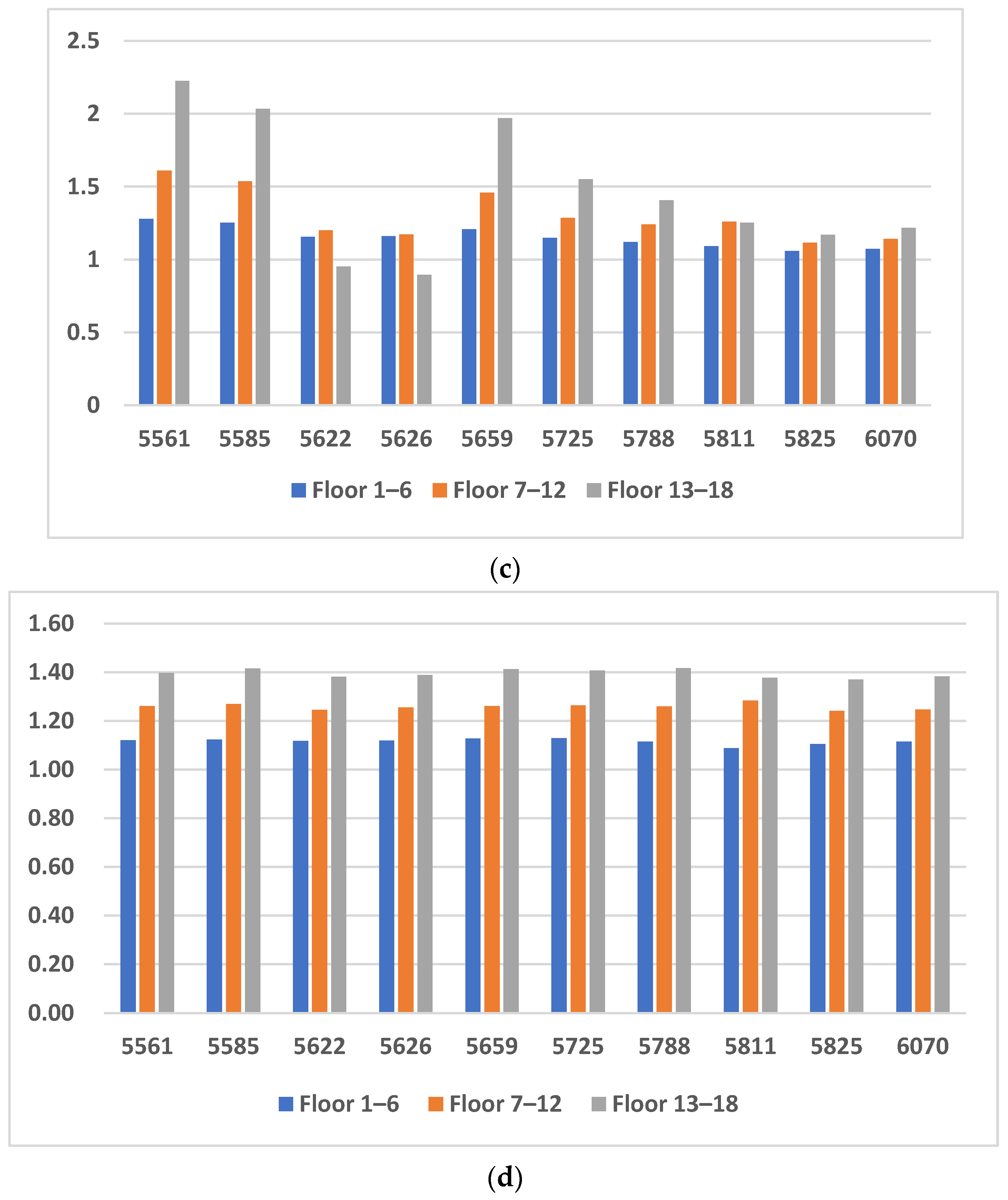
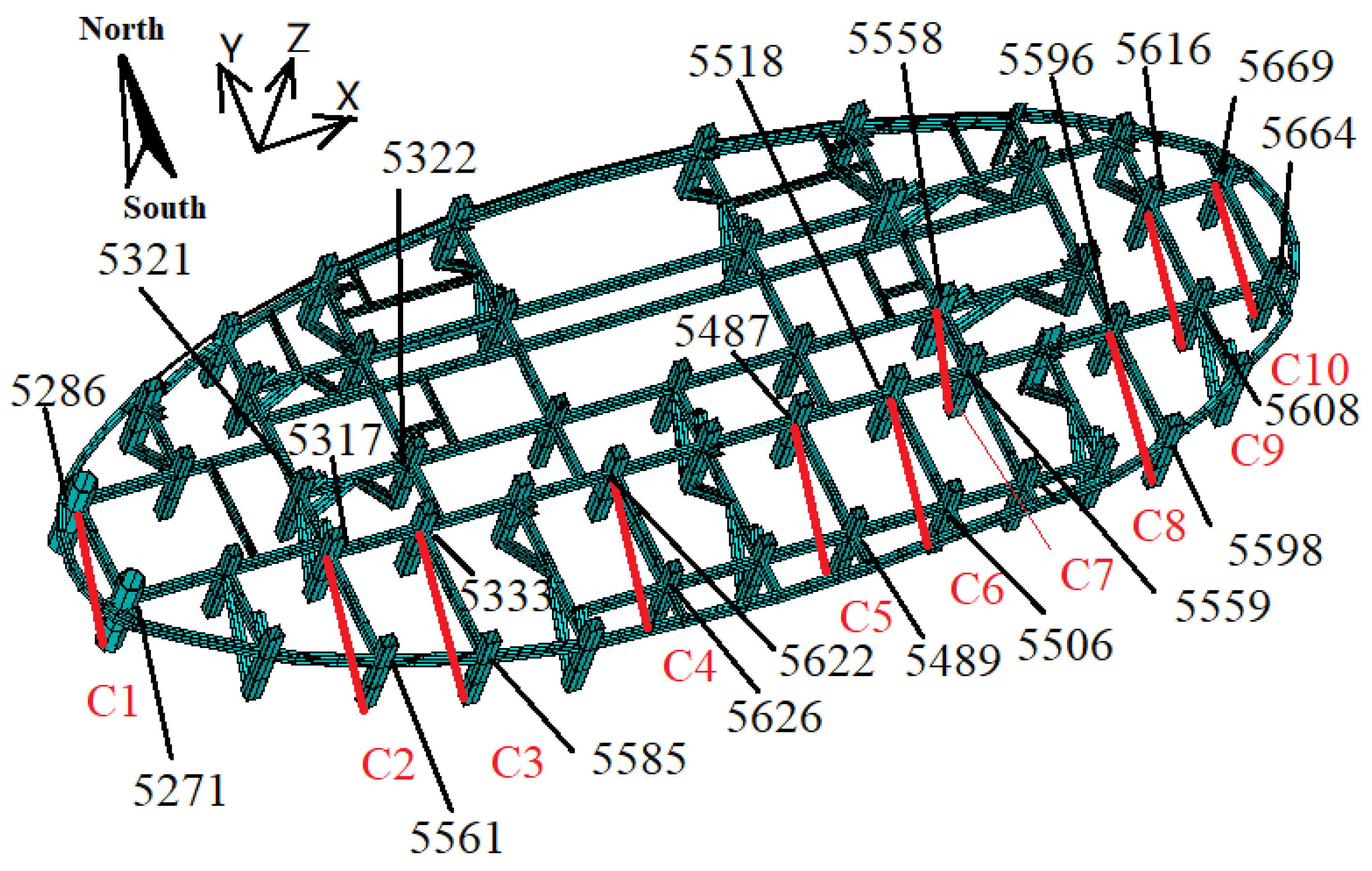
| Condition No. | Parameters | Without the VFD | With the VFD | ||||||||
|---|---|---|---|---|---|---|---|---|---|---|---|
| T (s) | fl (Hz) | α | C (kN·s/m) | Δσhs (MPa) | |uz| (mm) | N0 | Δσhs (MPa) | |uz| (mm) | Ne | k | |
| 1 | 24 | 0.042 | 0.25 | 450 | 196.86 | 3.83 | 1.911 × 105 | 79.34 | 1.73 | 2.920 × 106 | 15 |
| 2 | 24 | 0.042 | 0.25 | 600 | 58.94 | 1.45 | 7.122 × 106 | 37 | |||
| 3 | 24 | 0.042 | 0.25 | 750 | 43.37 | 1.23 | 2.638 × 107 | 138 | |||
| 4 | 24 | 0.042 | 0.25 | 900 | 32.55 | 1.07 | 1.108 × 108 | 580 | |||
| 5 | 24 | 0.042 | 0.25 | 1050 | 25.56 | 0.96 | 3.705 × 108 | 1939 | |||
| 6 | 24 | 0.042 | 0.35 | 750 | 109.58 | 2.12 | 1.108 × 106 | 6 | |||
| 7 | 24 | 0.042 | 0.45 | 750 | 137.46 | 2.48 | 5.613 × 105 | 3 | |||
| 8 | 24 | 0.042 | 0.55 | 750 | 145.96 | 2.60 | 4.689 × 105 | 2 | |||
| 9 | 24 | 0.042 | 0.65 | 750 | 148.03 | 2.62 | 4.495 × 105 | 2 | |||
| 10 | 12 | 0.083 | 0.25 | 750 | 199.59 | −3.828 | 1.834 × 105 | 43.37 | 1.230 | 2.638 × 107 | 144 |
| 11 | 6 | 0.167 | 0.25 | 750 | 199.72 | −3.831 | 1.830 × 105 | 32.91 | 1.075 | 1.047 × 108 | 572 |
| 12 | 3 | 0.333 | 0.25 | 750 | 199.48 | −3.826 | 1.837 × 105 | 24.94 | 0.953 | 4.193 × 108 | 2283 |
| 13 | 1 | 1.000 | 0.25 | 750 | 198.80 | −3.813 | 1.856 × 105 | 19.73 | 0.868 | 1.352 × 109 | 7286 |
| Model | Modal Frequency (Hz) | Parameters of the TMD | |||||||||
|---|---|---|---|---|---|---|---|---|---|---|---|
| 1 | 2 | 3 | md (kg) | m (kg) | μ | rfopt | ξopt | fd (Hz) | Copt (N·s/m) | kopt (N/m) | |
| A | 22.13 | 41.39 | 104.79 | 9.34 | 467.06 | 0.02 | 0.98 | 0.086 | 106.89 | 1075.87 | 4.21 × 106 |
| B | 1.30 | 4.67 | 6.31 | 15.99 | 799.47 | 0.02 | 0.98 | 0.086 | 6.44 | 110.96 | 2.62 × 104 |
| C | 0.396 | 0.417 | 0.468 | 2.305 × 107 | 1.152 × 106 | 0.05 | 0.952 | 0.134 | 0.416 | 8.040 × 105 | 7.854 × 106 |
| D | 0.390 | 0.427 | 0.452 | - | - | - | - | - | - | - | - |
| Condition No. | Parameters | Without the TMD | With the TMD | |||||||
|---|---|---|---|---|---|---|---|---|---|---|
| μ | rf | ξ | Δσhs (MPa) | |uz| (mm) | N0 | Δσhs (MPa) | |uz| (mm) | Ne | k | |
| 1 | 0.02 | 0.98 | 0.086 | 137.326 | 3.28 | 5.630 × 105 | 118.729 | 2.837 | 8.711 × 105 | 1.5 |
| 2 | 0.02 | 0.70 | 0.086 | 124.254 | 3.040 | 7.600 × 105 | 1.3 | |||
| 3 | 0.02 | 0.90 | 0.086 | 121.105 | 2.900 | 8.209 × 105 | 1.5 | |||
| 4 | 0.02 | 1.10 | 0.086 | 116.362 | 2.790 | 9.254 × 105 | 1.6 | |||
| 5 | 0.02 | 1.30 | 0.086 | 115.626 | 2.770 | 9.432 × 105 | 1.7 | |||
| 6 | 0.02 | 1.50 | 0.086 | 117.425 | 2.810 | 9.005 × 105 | 1.6 | |||
| 7 | 0.02 | 1.70 | 0.086 | 122.144 | 2.920 | 8.001 × 105 | 1.4 | |||
| 8 | 0.02 | 0.98 | 0.040 | 117.521 | 2.808 | 8.983 × 105 | 1.6 | |||
| 9 | 0.02 | 0.98 | 0.070 | 118.331 | 2.828 | 8.800 × 105 | 1.6 | |||
| 10 | 0.02 | 0.98 | 0.100 | 119.074 | 2.846 | 8.636 × 105 | 1.5 | |||
| 11 | 0.02 | 0.98 | 0.130 | 119.757 | 2.862 | 8.489 × 105 | 1.5 | |||
| 12 | 0.02 | 0.98 | 0.160 | 120.387 | 2.877 | 8.356 × 105 | 1.5 | |||
| 13 | 0.01 | 0.98 | 0.086 | 127.076 | 3.040 | 7.105 × 105 | 1.3 | |||
| 14 | 0.03 | 0.98 | 0.086 | 111.636 | 2.669 | 1.048 × 106 | 1.9 | |||
| 15 | 0.04 | 0.98 | 0.086 | 104.534 | 2.501 | 1.276 × 106 | 2.3 | |||
| 16 | 0.05 | 0.98 | 0.086 | 97.699 | 2.334 | 1.563 × 106 | 2.8 | |||
| No. | Connection without Damping Systems | Connection with VFD | Connection with TMD | |||||||||
|---|---|---|---|---|---|---|---|---|---|---|---|---|
| Haunched | Braced | |||||||||||
| Dt | T0 (Year) | Dt | Te-HVFD (Year) | k | Dt | Te-BVFD (Year) | k | Dt | Te-TMD (Year) | k | ||
| 5561 | 138 | 1.08 × 10−8 | 146 | 7.73 × 10−10 | 2052 | 14.1 | 5.80 × 10−10 | 2735 | 18.7 | 2.07 × 10−9 | 765 | 5.2 |
| 5585 | 137 | 4.85 × 10−9 | 326 | 3.75 × 10−10 | 4226 | 13.0 | 3.13 × 10−10 | 5062 | 15.5 | 1.06 × 10−9 | 1489 | 4.6 |
| 5626 | 137 | 3.59 × 10−9 | 441 | 3.04 × 10−9 | 522 | 1.2 | 9.79 × 10−9 | 162 | 0.4 | 1.09 × 10−9 | 1459 | 3.3 |
| 5788 | 138 | 1.39 × 10−8 | 113 | 2.05 × 10−9 | 773 | 6.8 | 1.27 × 10−9 | 1249 | 11.1 | 6.98 × 10−9 | 227 | 2.0 |
| 5622 | 137 | 5.93 × 10−9 | 267 | 5.27 × 10−9 | 301 | 1.1 | 1.17 × 10−8 | 135 | 0.5 | 1.78 × 10−9 | 893 | 3.3 |
| 5659 | 138 | 1.55 × 10−8 | 102 | 1.49 × 10−9 | 1065 | 10.4 | 1.01 × 10−9 | 1574 | 15.4 | 4.86 × 10−9 | 326 | 3.2 |
| 5725 | 138 | 1.70 × 10−8 | 93 | 2.33 × 10−9 | 680 | 7.3 | 1.51 × 10−9 | 1047 | 11.3 | 6.89 × 10−9 | 230 | 2.5 |
| 5811 | 139 | 2.52 × 10−10 | 6285 | 6.98 × 10−11 | 22,718 | 3.6 | 3.02 × 10−11 | 52,434 | 8.3 | 1.26 × 10−10 | 12,535 | 2.0 |
| VFD Positions | Fatigue Life | 5561 | 5585 | 5622 | 5626 | 5659 | 5725 | 5788 | 5811 | 5825 | 6070 |
|---|---|---|---|---|---|---|---|---|---|---|---|
| Without VFD | T0 (Year) | 161 | 353 | 325 | 543 | 100 | 95 | 257 | 3.24 × 108 | 186 | 230 |
| C1 | Tc (Year) | 209 | 441 | 373 | 625 | 117 | 103 | 271 | 3.33 × 108 | 181 | 230 |
| k | 1.30 | 1.25 | 1.15 | 1.15 | 1.17 | 1.09 | 1.06 | 1.03 | 0.97 | 0.99 | |
| C2 | Tc (Year) | 192 | 427 | 371 | 621 | 116 | 104 | 274 | 3.40 × 108 | 186 | 230 |
| k | 1.19 | 1.21 | 1.14 | 1.14 | 1.16 | 1.10 | 1.07 | 1.05 | 1.00 | 1.02 | |
| C3 | Tc (Year) | 194 | 386 | 367 | 615 | 115 | 104 | 276 | 3.43 × 108 | 189 | 240 |
| k | 1.20 | 1.09 | 1.13 | 1.13 | 1.15 | 1.10 | 1.07 | 1.06 | 1.02 | 1.03 | |
| C4 | Tc (Year) | 630 | 1187 | 202 | 300 | 369 | 209 | 494 | 5.34 × 108 | 260 | 340 |
| k | 3.91 | 3.36 | 0.62 | 0.55 | 3.69 | 2.20 | 1.92 | 1.65 | 1.40 | 1.49 | |
| C5 | Tc (Year) | 188 | 409 | 363 | 608 | 114 | 107 | 274 | 3.56 × 108 | 199 | 250 |
| k | 1.17 | 1.16 | 1.12 | 1.12 | 1.14 | 1.12 | 1.07 | 1.10 | 1.07 | 1.08 | |
| C6 | Tc (Year) | 190 | 415 | 374 | 626 | 116 | 111 | 270 | 3.69 × 108 | 207 | 260 |
| k | 1.18 | 1.17 | 1.15 | 1.15 | 1.16 | 1.17 | 1.05 | 1.14 | 1.11 | 1.12 | |
| C7 | Tc (Year) | 311 | 689 | 605 | 1168 | 190 | 183 | 498 | 6.44 × 108 | 356 | 440 |
| k | 1.93 | 1.95 | 1.86 | 2.15 | 1.90 | 1.93 | 1.94 | 1.99 | 1.91 | 1.91 | |
| C8 | Tc (Year) | 176 | 386 | 356 | 594 | 110 | 105 | 284 | 3.59 × 108 | 207 | 260 |
| k | 1.09 | 1.09 | 1.09 | 1.09 | 1.10 | 1.11 | 1.10 | 1.11 | 1.11 | 1.12 | |
| C9 | Tc (Year) | 173 | 380 | 352 | 588 | 138 | 105 | 283 | 3.60 × 108 | 212 | 270 |
| k | 1.07 | 1.08 | 1.08 | 1.08 | 1.38 | 1.10 | 1.10 | 1.11 | 1.14 | 1.16 | |
| C10 | Tc (Year) | 172 | 380 | 352 | 588 | 109 | 105 | 284 | 3.61 × 108 | 189 | 310 |
| k | 1.07 | 1.08 | 1.08 | 1.08 | 1.09 | 1.11 | 1.11 | 1.11 | 1.02 | 1.35 |
| C1 | C2 | C3 | C4 | C5 | C6 | C7 | C8 | C9 | C10 | |||
|---|---|---|---|---|---|---|---|---|---|---|---|---|
| Model without VFD | Connection i | T0 (Year) | 136 | 161 | 353 | 543 | 319 | 190 | 258 | 911 | 210 | 206 |
| Connection j | T0 (Year) | 136 | 130 | 321 | 325 | 208 | 130 | 181 | 1015 | 230 | 186 | |
| Model with VFD | Connection i | Tc (Year) | 181 | 192 | 386 | 300 | 203 | 90 | 270 | 1027 | 210 | 213 |
| Connection j | Tc (Year) | 179 | 156 | 342 | 202 | 203 | 60 | 189 | 1136 | 270 | 189 | |
| Connection i | k | 1.33 | 1.19 | 1.09 | 0.55 | 0.64 | 0.46 | 1.05 | 1.13 | 1.00 | 1.03 | |
| Connection j | k | 1.31 | 1.20 | 1.06 | 0.62 | 0.97 | 0.50 | 1.04 | 1.12 | 1.16 | 1.01 |
Publisher’s Note: MDPI stays neutral with regard to jurisdictional claims in published maps and institutional affiliations. |
© 2022 by the authors. Licensee MDPI, Basel, Switzerland. This article is an open access article distributed under the terms and conditions of the Creative Commons Attribution (CC BY) license (https://creativecommons.org/licenses/by/4.0/).
Share and Cite
Fang, Z.; Zhang, J.; Yang, F.; Li, A. Fatigue Damage Mitigation for Welded Beam-to-Column Connections in Steel High-Rise Buildings Using Passive Vibration Control. Buildings 2022, 12, 1898. https://doi.org/10.3390/buildings12111898
Fang Z, Zhang J, Yang F, Li A. Fatigue Damage Mitigation for Welded Beam-to-Column Connections in Steel High-Rise Buildings Using Passive Vibration Control. Buildings. 2022; 12(11):1898. https://doi.org/10.3390/buildings12111898
Chicago/Turabian StyleFang, Zhao, Jianshao Zhang, Fan Yang, and Aiqun Li. 2022. "Fatigue Damage Mitigation for Welded Beam-to-Column Connections in Steel High-Rise Buildings Using Passive Vibration Control" Buildings 12, no. 11: 1898. https://doi.org/10.3390/buildings12111898
APA StyleFang, Z., Zhang, J., Yang, F., & Li, A. (2022). Fatigue Damage Mitigation for Welded Beam-to-Column Connections in Steel High-Rise Buildings Using Passive Vibration Control. Buildings, 12(11), 1898. https://doi.org/10.3390/buildings12111898







